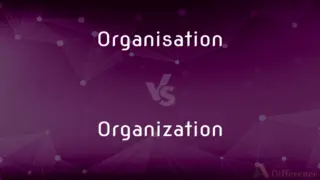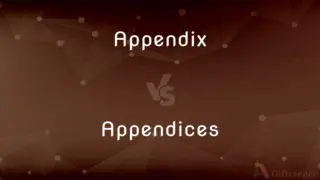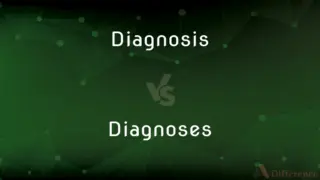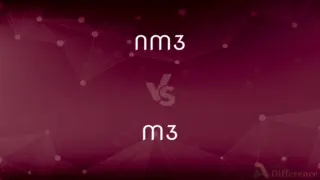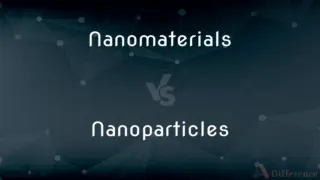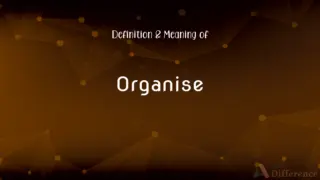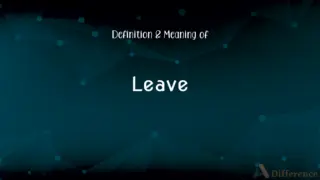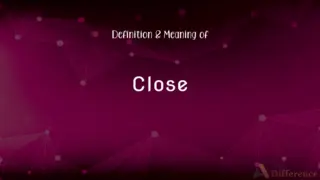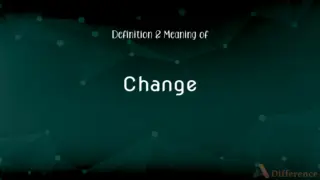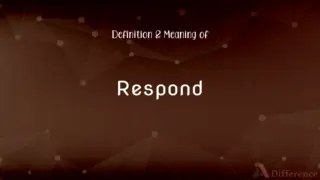Homograft vs. Allograft — What's the Difference?
Edited by Tayyaba Rehman — By Fiza Rafique — Updated on November 3, 2023
Homograft is tissue transplanted between genetically identical individuals; allograft is between genetically different individuals of the same species.
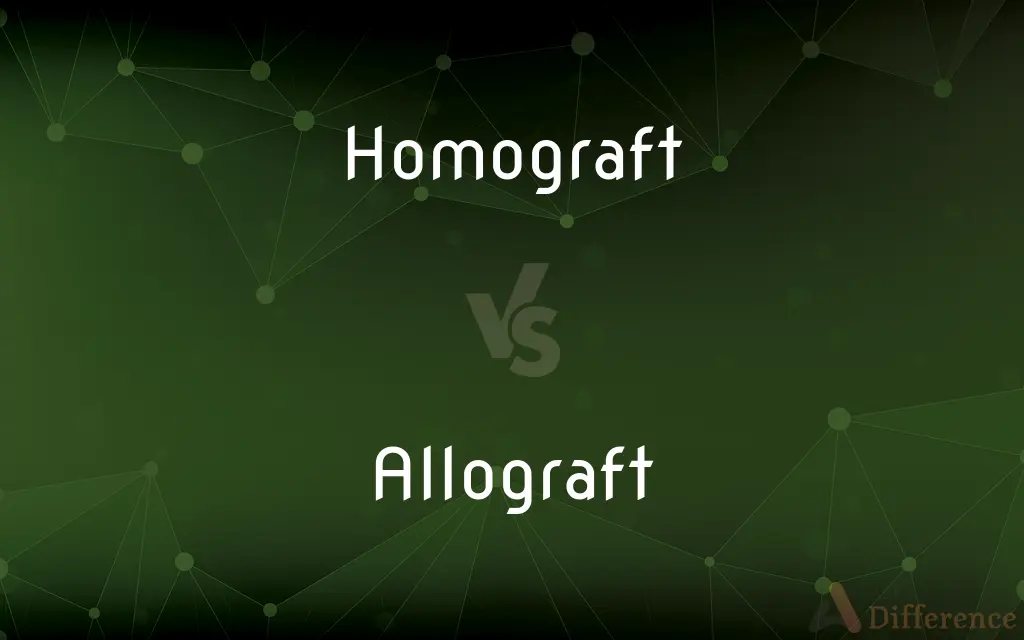
Difference Between Homograft and Allograft
Table of Contents
ADVERTISEMENT
Key Differences
A homograft is a tissue graft from a donor to a genetically identical recipient. This term specifically refers to transplants within identical twins or cloned animals where genetic makeup is the same. Homografts are advantageous because they are less likely to be rejected by the recipient’s immune system due to their identical antigenic properties.
An allograft is a tissue transplant between two genetically different individuals of the same species. The term allograft is more commonly used in medical settings than homograft. It encompasses a broader range of transplant situations, such as from one human to another who are not genetically identical, which is a far more common scenario than the specific case of identical twins.
While homografts are ideal in terms of compatibility, they are exceedingly rare due to the need for genetically identical donors and recipients. In contrast, allografts are more commonly performed but carry a higher risk of rejection. The body’s immune system can recognize the genetic differences in the donated tissue, potentially leading to graft rejection.
The success of a homograft transplant hinges on the genetic sameness of donor and recipient, which dramatically reduces the risk of rejection. These grafts do not usually require long-term immunosuppression therapy. The rarity of such genetically identical pairs limits the use of homografts to very specific cases.
Allografts, being more common, have led to the development of sophisticated immunosuppressive drugs to help prevent rejection. While allografts have revolutionized transplant medicine, allowing for numerous life-saving procedures, the complexity of managing immune responses remains a significant challenge.
ADVERTISEMENT
Comparison Chart
Genetic Relationship
Identical individuals
Different individuals
Commonality
Rare due to the need for genetic identicals
Common in transplant medicine
Risk of Rejection
Lower due to genetic sameness
Higher due to genetic differences
Immunosuppression
Often not needed
Usually required
Use Case
Specific, e.g., between identical twins
Broad, for most organ transplants
Compare with Definitions
Homograft
A homograft is a tissue graft between genetically identical individuals.
The burn victim received a homograft from his identical twin, minimizing rejection risks.
Allograft
An allograft is a tissue graft between individuals of the same species but genetically different.
The kidney allograft from the deceased donor saved her life.
Homograft
Homograft refers to the transplantation of cells or tissues between same-genome hosts.
A homograft from her twin sister made the heart transplant successful.
Allograft
Allografts are used in most human organ transplants between non-identical individuals.
He received a liver allograft due to his acute liver failure.
Homograft
In transplantation, a homograft is the transfer of tissue between two genetically identical bodies.
The surgeon used a skin homograft from the patient's identical twin to treat the severe burns.
Allograft
In medical procedures, an allograft involves donating tissue from one person to another genetically distinct person.
The bone marrow allograft from a matched donor offered a chance for the leukemia patient’s recovery.
Homograft
A homograft is an organ or tissue donation between individuals with identical genetic makeup.
The homograft from his identical twin brother helped him recover quickly after the surgery.
Allograft
An allograft refers to the transplantation of organ or tissue between two non-identical members of a species.
The corneal allograft restored his vision after the injury.
Homograft
Homografts are grafts exchanged between cloned organisms or identical twins.
Scientists used a homograft to study organ rejection in cloned sheep.
Allograft
Allograft is a term for organ or tissue donation where the donor and recipient are not genetically the same.
Thanks to the heart allograft, she got a new lease on life.
Homograft
A tissue graft from a donor of the same species as the recipient.
Allograft
A tissue graft from a donor of the same species as the recipient but not genetically identical.
Homograft
See allograft.
Allograft
A tissue or organ graft between genetically different individuals of the same species, as between two humans. Also called homograft.
Homograft
Synonym of allograft
Allograft
(surgery) A surgical transplant of tissue between genetically different individuals of the same species.
Homograft
Tissue or organ transplanted from a donor of the same species but different genetic makeup; recipient's immune system must be suppressed to prevent rejection of the graft
Allograft
To perform a transplant of this kind.
Allograft
Tissue or organ transplanted from a donor of the same species but different genetic makeup; recipient's immune system must be suppressed to prevent rejection of the graft
Common Curiosities
What is a homograft?
A homograft is a tissue transplant between genetically identical individuals.
When would a homograft be used?
A homograft is used when a genetically identical donor is available, such as an identical twin.
Are homografts common?
No, homografts are rare due to the difficulty in finding genetically identical donors.
What are the risks associated with an allograft?
Allografts carry the risk of rejection and require immunosuppression therapy.
Can a homograft be from an organ or just tissue?
A homograft can be an organ or tissue, as long as it's from a genetically identical individual.
Are homografts used in skin grafting?
Yes, homografts can be used in skin grafting if an identical twin is available.
Is blood transfusion considered an allograft?
Yes, a blood transfusion is considered an allograft since it involves transferring blood between genetically different individuals.
Do homografts require immunosuppression?
Typically, homografts do not require long-term immunosuppression due to the lack of genetic difference.
What is an allograft?
An allograft is a tissue transplant between genetically different individuals of the same species.
Can an allograft come from a living donor?
Yes, living donors can provide allografts, such as a kidney or a portion of their liver.
What determines the compatibility of a homograft?
Genetic identity between the donor and recipient ensures homograft compatibility.
Why are allografts more common than homografts?
Allografts are more common because finding a genetically different donor is easier than finding a genetically identical one.
What are the ethical considerations for both homografts and allografts?
Ethical considerations include informed consent, donor risk, and the equitable allocation of donor tissues or organs.
What are the long-term considerations for allograft recipients?
Allograft recipients often require lifelong immunosuppression and monitoring for rejection.
How do doctors prevent allograft rejection?
Doctors use immunosuppressive drugs to reduce the risk of rejection in allograft transplants.
Share Your Discovery

Previous Comparison
Slave vs. Serf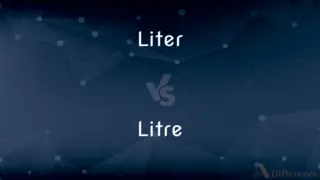
Next Comparison
Liter vs. LitreAuthor Spotlight
Written by
Fiza RafiqueFiza Rafique is a skilled content writer at AskDifference.com, where she meticulously refines and enhances written pieces. Drawing from her vast editorial expertise, Fiza ensures clarity, accuracy, and precision in every article. Passionate about language, she continually seeks to elevate the quality of content for readers worldwide.
Edited by
Tayyaba RehmanTayyaba Rehman is a distinguished writer, currently serving as a primary contributor to askdifference.com. As a researcher in semantics and etymology, Tayyaba's passion for the complexity of languages and their distinctions has found a perfect home on the platform. Tayyaba delves into the intricacies of language, distinguishing between commonly confused words and phrases, thereby providing clarity for readers worldwide.








